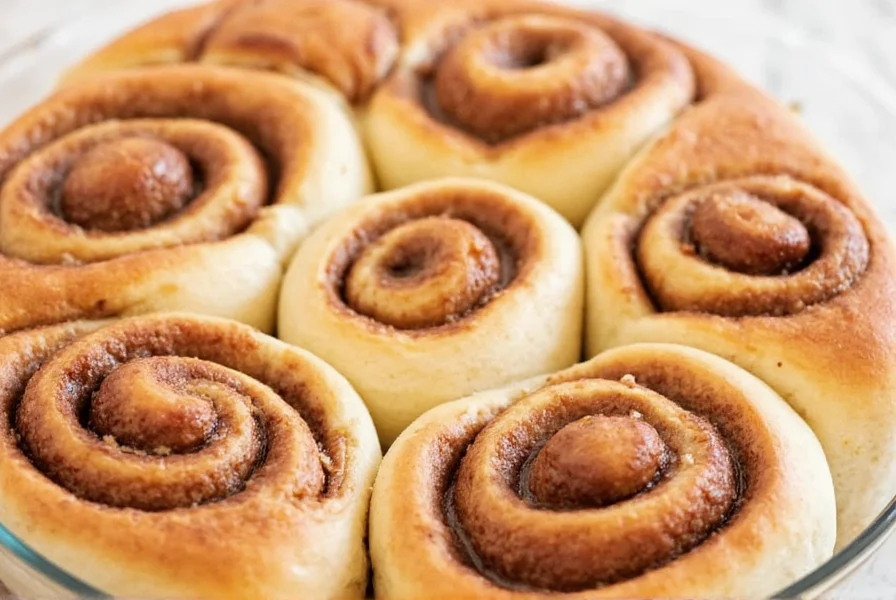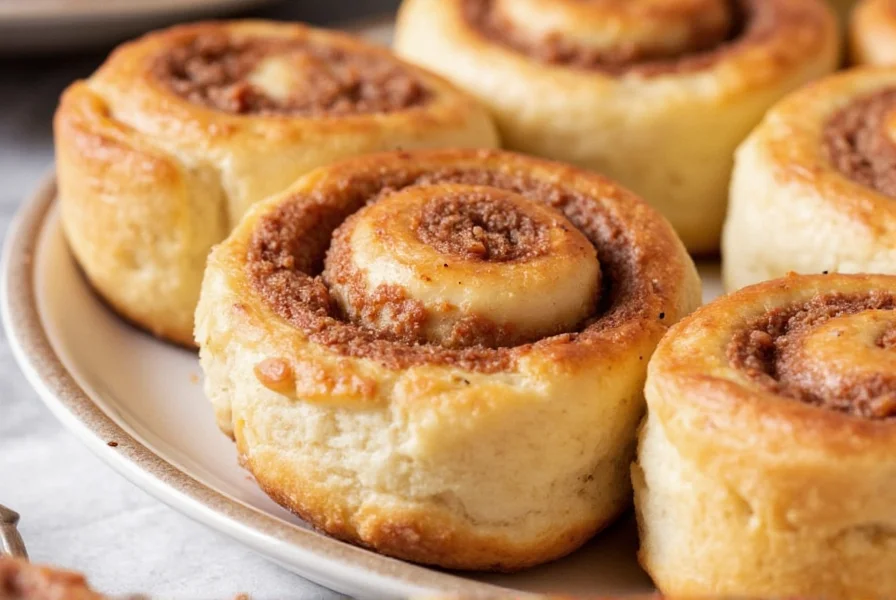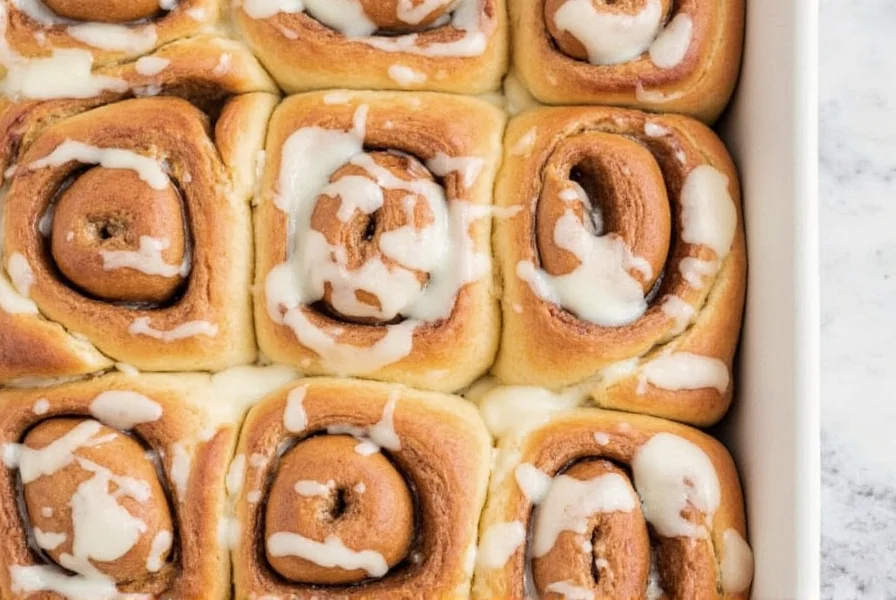The best homemade cinnamon rolls require a simple yeast dough with precise measurements, proper proofing time, and a balanced cinnamon-sugar filling. Key to perfect results: use fresh yeast, maintain dough temperature around 75-80°F during rising, and don't overbake. Our tested recipe yields soft, fluffy rolls with a rich cinnamon flavor and smooth cream cheese icing—no special equipment needed, just patience and attention to detail.
There's nothing quite like the aroma of freshly baked cinnamon rolls filling your kitchen on a weekend morning. While store-bought options exist, homemade cinnamon rolls offer superior texture, flavor control, and that satisfying "I made this" pride. After perfecting this recipe through dozens of test batches, we've identified the critical factors that transform ordinary dough into extraordinary rolls.
Why This Homemade Cinnamon Rolls Recipe Works
Many cinnamon rolls from scratch recipes fail because they skip essential steps or use imprecise measurements. Our approach addresses common pitfalls:
- Yeast activation—using warm (not hot) milk prevents killing the yeast
- Dough hydration—the exact milk-to-flour ratio ensures proper elasticity
- Filling consistency—butter at precise room temperature prevents tearing
- Baking science—oven temperature calibration avoids under/over-baking

Essential Ingredients and Why They Matter
Quality ingredients form the foundation of perfect cinnamon roll dough. Don't substitute haphazardly—each component serves a specific purpose:
| Ingredient | Critical Function | Substitution Notes |
|---|---|---|
| Active dry yeast | Creates lift through fermentation | Instant yeast works but reduce amount by 25% |
| Bread flour | Higher protein = better structure | All-purpose works but rolls will be less chewy |
| Unsalted butter | Flavor carrier for filling | Margarine creates greasy texture |
| Dark brown sugar | Moisture retention and deep flavor | Light brown sugar yields less complex taste |
Step-by-Step Guide to Perfect Cinnamon Rolls
Dough Preparation (90 minutes)
- Mix wet ingredients: Warm milk to 110°F (use thermometer), add yeast and 1 tsp sugar. Wait 5-7 minutes until foamy.
- Combine dry ingredients: Whisk 3½ cups bread flour, ¼ cup sugar, and 1 tsp salt.
- Form dough: Mix wet and dry ingredients with stand mixer fitted with dough hook for 8 minutes at medium speed.
- First rise: Place in oiled bowl, cover, rest in warm spot (75-80°F) for 60 minutes until doubled.
Filling and Shaping (20 minutes)
- Roll dough: On floured surface, roll into 18x12 inch rectangle (¼ inch thick).
- Apply filling: Spread softened butter evenly, then mix 1 cup dark brown sugar with 3 tbsp cinnamon and sprinkle evenly.
- Roll tightly: Starting from long edge, roll into log, pinch seam to seal.
- Cut rolls: Using dental floss (prevents squishing), cut into 12 equal pieces.
Baking and Icing (30 minutes)
- Second rise: Place in greased 9x13 pan, cover, rise 30 minutes until puffy.
- Bake: 350°F for 22-25 minutes until golden (internal temp 190°F).
- Cool: Wait 15 minutes before icing to prevent melting.
- Icing: Beat 4 oz cream cheese, ¼ cup butter, 1 cup powdered sugar, and ½ tsp vanilla until smooth.

Troubleshooting Common Cinnamon Roll Problems
Even experienced bakers encounter issues with homemade cinnamon rolls from scratch. Here's how to fix them:
- Dense rolls: Overworked dough or expired yeast—check yeast activity first
- Filling leaking out: Butter too warm or dough rolled too thin—chill log 10 minutes before cutting
- Burnt bottoms: Pan too dark—use light-colored metal pan
- Dry texture: Overbaked or insufficient fat—use thermometer to check doneness
Advanced Techniques for Next-Level Results
Once you've mastered the basic homemade cinnamon rolls recipe, try these professional enhancements:
- Overnight method: Refrigerate shaped rolls, bake cold from fridge (add 5 minutes baking time)
- Flavor variations: Add orange zest to dough or toasted pecans to filling
- Icing alternatives: Brown butter cream cheese icing or maple glaze
- Texture boost: Replace ½ cup milk with buttermilk for tangier flavor
Storage and Reheating Instructions
Proper storage maintains that fresh-baked quality:
- Room temperature: Store covered 2 days (filling may weep after day 1)
- Refrigerated: Up to 5 days—reheat 10 seconds in microwave
- Freezing: Wrap individual rolls tightly, freeze up to 3 months. Thaw at room temperature 2 hours before reheating.
- Best reheating: 30 seconds at 50% power in microwave followed by 2 minutes in 350°F oven
Frequently Asked Questions
Can I make cinnamon rolls without a stand mixer?
Yes, you can make homemade cinnamon rolls by hand. Knead the dough for 10-12 minutes until smooth and elastic. The windowpane test (stretching a small piece until thin enough to see light through) confirms proper development. Hand-kneaded dough often yields slightly chewier texture.
Why did my cinnamon rolls come out dry?
Dry cinnamon rolls from scratch usually result from overbaking (check oven temperature with separate thermometer), insufficient fat in dough, or inaccurate flour measurement. Use the spoon-and-level method for flour and remove rolls when internal temperature reaches 190°F. Adding 1 extra tbsp butter to dough can improve moisture.
How do I prevent the filling from leaking out during baking?
To stop homemade cinnamon rolls filling from leaking: 1) Ensure butter is spread at true room temperature (not melted), 2) Roll dough tightly from the long edge, 3) Chill the rolled log for 15 minutes before cutting, 4) Pinch the seam closed after rolling. Using dark brown sugar (higher moisture content) also helps binding.
Can I prepare cinnamon rolls the night before?
Absolutely. For overnight homemade cinnamon rolls, complete shaping and place rolls in pan, then cover tightly and refrigerate. Next morning, remove 30 minutes before baking to take chill off, then bake as directed (may need 3-5 extra minutes). The cold fermentation actually enhances flavor complexity.
What's the ideal baking temperature for cinnamon rolls?
The optimal cinnamon roll baking temperature is 350°F (175°C). Higher temperatures cause uneven baking (burnt tops, raw bottoms), while lower temperatures dry out the rolls. Always preheat oven fully and use an oven thermometer to verify accuracy—most ovens have hot spots or inaccurate dials.











 浙公网安备
33010002000092号
浙公网安备
33010002000092号 浙B2-20120091-4
浙B2-20120091-4